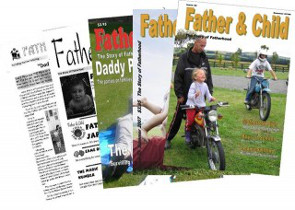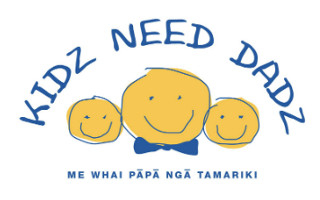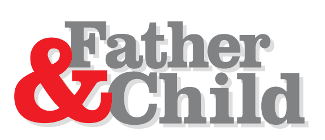The Different Schools
Austrian Rudolf Steiner was a ‘thinker’ who lived from 1861 to 1925. The schools he invented have been spread around the world by parents who are looking for a more holistic alternative to state education.
New Zealand has several Rudolf Steiner schools. Harald Breiding-Buss sums up what they do.
Choosing the right school can cause quite a bit of anxiety amongst parents, and even after the decision is made you’ll keep asking yourself if it was the best one.
As a result, children get transferred between schools quite a bit for no other reason than the parents looking for better teachers, better quality education, or better peers.
One choice available in a number of places is Rudolf Steiner schools. The larger ones, such as in Christchurch or Hastings, go all the way from Kindergarten to High School, and this kind of stability is part of the Steiner mission.
Rudolf Steiner himself was a bit of an oddball who lived in the late 1800s/early 1900s, espousing anthroposophical theory. Much of his thinking was a response to the wave of Darwinism sweeping over Europe at the time, which eventually led to ideas of racial superiority in his native Austria and Germany. Steiner insisted that there is a fundamental difference between people and animals, and therefore people can’t be reduced to the level of biology only.
He went on to develop theories about the spiritual development of humans and started his first school in 1914 or so, ironically sponsored by cigarette manufacturer Waldorf. Steiner schools are still known as Waldorf schools in many places.
Most of Steiner’s theories are a bit hard to swallow. They involve clairvoyance, astral bodies and other meta-physical items generally associated with fringe elements of society.
However, most Steiner schools in New Zealand have become quite mainstream and as a result have been overrun by parents simply looking for a friendlier, less competitive alternative to a state school. While technically private schools, they run an integrated curriculum, are subject to inspections and reviews by the Educational Review Office, and governed by an elected Board of Trustees, like any other school.
Steiner schools try to teach according to a child’s developmental stage (as identified by Rudolf Steiner). Formal schooling does not begin until the child is 6 (although the Steiner Kindergartens get school funding from age 5) and literacy is not taught very intensively for the first year. Recovery programmes are not available before age 9.
Homework is generally not set until class 5 (year 6), and then only in moderation.
The schools set big store in the teaching environment, and you will find the most thought-out and friendliest buildings and classrooms here. They try to avoid right angles, so buildings might be hexagonal or so.
There is usually lots of natural light in the classrooms and natural materials are used wherever possible. You may find old-fashioned blackboards with in-folding side-panels and multi-colour chalk bits, but certainly no computers in the first few years.
The schools’ ideal is that classes stay with the same teacher throughout primary/intermediary school level, although in practice that rarely happens. But developing a relationship between teachers and students is considered rather important. Children are personally greeted by the teacher as they come in the morning, and each gets a handshake when leaving.
The class as such is also kept stable as much as possible. Unlike in state schools, where children start at their fifth birthday, all Steiner students start school at the same time after the summer holidays, and many would already know each other from kindergarten.
The schools also try hard to draw in the parents, not just to help the schools with work and money, but to make sure they network with one another. Parent evenings are scheduled at least three times a year, and social get-togethers between class parents are actively encouraged.
Establishing a relationship with other parents comes in especially useful when the children grow into teenagers. If, by then, enough trust has developed between parents, it avoids a lot of potential minefields.
The slower start academically makes it difficult to change schools at first, but by year 6 or 7 children seem to have fully caught up. The Steiner curriculum relies heavily on art, or visual concepts in general, and also on project work.
Teaching is structured around ‘main lessons’, where a subject is explored in depth for 5-6 weeks for 2-3 hours every morning. Generally students are asked to produce a book for each main lesson, which will contain lots of drawings as well as the subject text. You won’t find photocopied colour-in sheets glued into them.
Steiner schools also teach the ‘old skills’, such as handwork or woodwork, and both are taught to either sex. Students are not forbidden to climb the trees on the school grounds, and can even make swords out of wood or cardboard during school time (although I think they draw the line at guns). Generally, there’s also a better gender mix amongst the teachers than in state schools.
There are no school uniforms (it runs contrary to Steiner’s belief in treating people as individuals), although for the lower school (up until year 8) there is a dress code which includes a prohibition on obvious labels such as Nike or Disney, all jewelry (even inconspicuous earrings), and ‘loud’ messages on T-Shirts.
By the time the kids reach High School level (called ‘upper school’) the teaching format is much more similar to a mainstream school.
Teaching is divided into subjects, with a variety of teachers, although there are still main lessons offering more focus. As with any other school, the teaching standard and success depends a lot on the individual teachers as well as how much disruptive behaviour they have to deal with in any particular class.
Steiner schools tend to draw from more middle-class families, but they like their classes big: 30 children each. According to their philosophy that is desirable to ensure all the personality types are adequately represented, but it is a big handful for a teacher to control.
All Steiner schools teach Eurythmy, which is considered a core part of a Steiner education. It is a form of movement or form dance (Steiner himself described it as an art – he didn’t invent it), supposedly helping the spirit to express itself, but in practice often causing quite negative expressions from the students – it is wildly unpopular, but at least doesn’t seem to do them any harm.
One of the biggest drawbacks of Steiner schools to me is that they have so little interest in sports and PE. Rudolf Steiner himself didn’t seem to like sports at all. In one of his speeches he indicated that he thought sports reduces your spirit back to the level of an animal.
His schools mostly seem to have gotten over it and they participate in the usual athletics competitions and provide a modest amount of PE (the North Island schools even get their year 6 classes together for something like an ‘Olympics’ event).
However, in Christchurch at least, any structured coaching in any sports type is a rarity and more often than not seems to happen in the PE teacher’s own time (sometimes in the lunch break).
Would I recommend them? I think the positives outweigh the negatives much more so than in most schools I’ve seen, and their methods of teaching make a lot of sense to me. However, if you run into problems you’ll probably find that Steiner schools are even less willing to acknowledge them (and do something about them) than your average state school.
You may also have to put up with less-than-enthusiastic attitudes to immunisation, and other pet-hates of the more alternative sector of society but, on the up-side, 10 year old girls in the school still seem to be able to communicate without cellphones.
Next: Dating Dads




